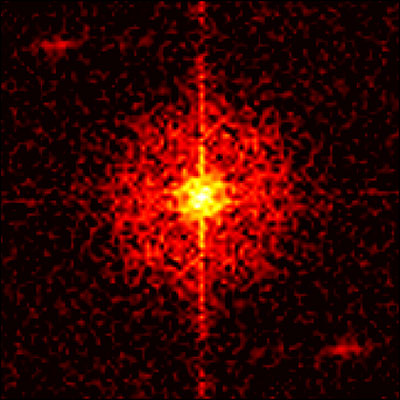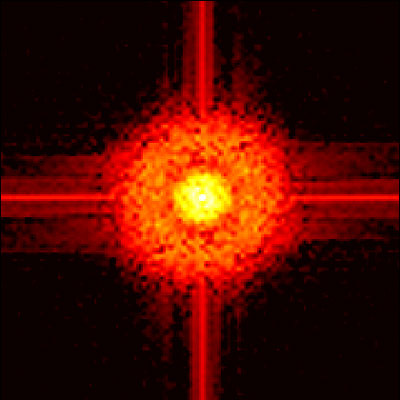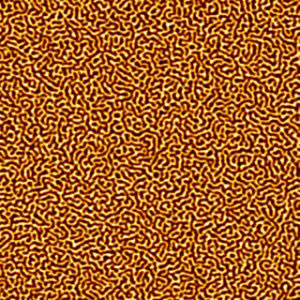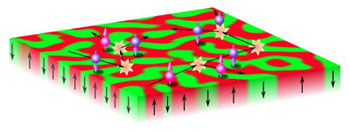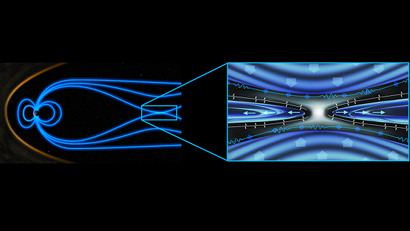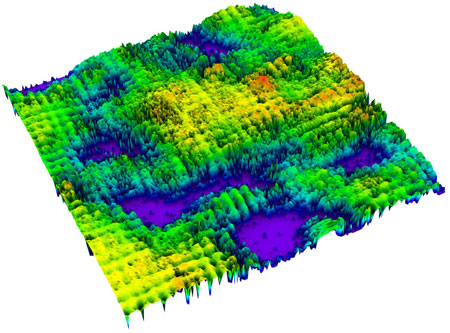
Kohsaka and colleagues found evidence that the pseudogap state may be helpful for emergence of the superconducting state. At very low doping levels, they saw the formation of distinct nanometer-scale clusters that are in the pseudogap state. As they added more dopant atoms, they observed that these clusters start to connect (Fig. 1). Intriguingly, full connection happens just as the material becomes a superconductor.
Hole doping first destroys the Mott state, yielding a weak insulator6, 7 where electrons localize only at low temperatures without a full energy gap. At higher doping levels, the ‘pseudogap’, a weakly conducting state with an anisotropic energy gap and intra-unit-cell breaking of 90° rotational (C4v) symmetry, appears3, 4, 8, 9, 10.
However, a direct visualization of the emergence of these phenomena with increasing hole density has never been achieved. Here we report atomic-scale imaging of electronic structure evolution from the weak insulator through the emergence of the pseudogap to the superconducting state in Ca2− xNa xCuO2Cl2. The spectral signature of the pseudogap emerges at the lowest doping level from a weakly insulating but C4v-symmetric matrix exhibiting a distinct spectral shape.
At slightly higher hole density, nanoscale regions exhibiting pseudogap spectra and 180° rotational (C2v) symmetry form unidirectional clusters within the C4v-symmetric matrix. Thus, hole doping proceeds by the appearance of nanoscale clusters of localized holes within which the broken-symmetry pseudogap state is stabilized. A fundamentally two-component electronic structure11 then exists in Ca2− xNa xCuO2Cl2 until the C2v-symmetric clusters touch at higher doping levels, and the long-range superconductivity appears.
Neglecting the naturally pixelating sampling technique, E fields of the emerging domains appearing here as a fractal beadwork of surface plasmons on the pictograms that have in fact, a coherent 90º, 180º, 90º Rotational Symmetry.
Flux/fields now inherent in the plasmons as symmetric EM holograms interface at melding domain surfaces (more to that later).
Emergent rotational symmetries in disordered magnetic domain patterns.
Run Su, Keoki A Seu, Daniel Parks, Jimmy J Kan, Eric E Fullerton, Sujoy Roy, Stephen D Kevan
Advanced Light Source, Lawrence Berkeley National Laboratory, Berkeley, California 94720, USA.
Physical Review Letters (impact factor: 7.37). 12/2011; 107(25):257204.
0 0 · 0 BOOKMARKS
ABSTRACT
Uniaxial systems often form labyrinthine domains that exhibit short-range order but are macroscopically isotropic and would not be expected to exhibit precise symmetries. However, their underlying frustration results in a multitude of metastable configurations of comparable energy, and driving such a system externally might lead to pattern formation. We find that soft x-ray speckle diffraction patterns of the labyrinthine domains in CoPd/IrMn heterostructures reveal a diverse array of hidden rotational symmetries about the magnetization axis, thereby suggesting an unusual form of emergent order in an otherwise disordered system. These symmetries depend on applied magnetic field, magnetization history, and scattering wave vector. Maps of rotational symmetry exhibit intriguing structures that can be controlled by manipulating the applied magnetic field in concert with the exchange bias condition.
Source: PubMed
At some distance in the induced gap,
B vector is null and
E is full-cycle, apparently super-conducting. At some points as sampled in plane,
b is at null node and
e is full amplitude. Those conduced electro-chemical nodes, electrons and holes, act sort of as pivot points in inter-domainal orderings.
http://www.nature.com/nphys/journal/v8/ ... s2321.html
http://www.researchgate.net/publication ... n_patterns